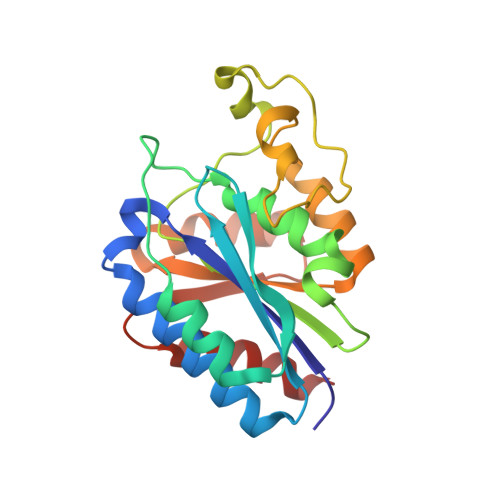Pactolus I-Domain: Functional Switching of the Rossmann Fold.
Sen, M., Legge, G.B.(2007) Proteins 68: 626
- PubMed: 17523188
- DOI: https://doi.org/10.1002/prot.21458
- Primary Citation of Related Structures:
2IUE - PubMed Abstract:
Murine Pactolus is a neutrophil-specific single chain glycoprotein that plays a role as an apoptosis marker for macrophages. The extracellular region of the protein shows strong sequence similarities to integrin beta-subunits. Critical sequence modifications differentiate its function when compared to the integrin family. We show experimentally that Pactolus I-domain does not bind divalent metal ions, indicating that ligand binding is not mediated through a metal ion-dependent adhesion site (MIDAS). NMR data was used to map secondary structure and the strand pairing within the beta-sheet to confirm an overall Rossmann fold topology. Homology modeling enhanced by the NMR data was used to determine the overall structure, with two key loop insertions/deletions (insertion 2 and SDL) that distinguish the Pactolus I-domain from the integrin alpha I-domain and beta I-domains. NMR peak exchange broadening is observed due to dimerization, correlating to the beta I-domain and beta propeller heterodimerization region within the integrin headpiece. Two unique N-linked glycosylation sites (Asn151 and Asn230) within this region disrupt dimerization and may account for why Pactolus is not found to associate with an alpha-subunit. These changes in quaternary structure, ligand binding loops, glycosylation, and metal sites illustrate how evolution has rapidly and effectively altered key aspects of the integrin beta-subunit to derive a protein of novel function on an existing protein scaffold.
- Department of Biology and Biochemistry, University of Houston, 4800 Calhoun, Houston, Texas 77204-5001, USA.
Organizational Affiliation:
















